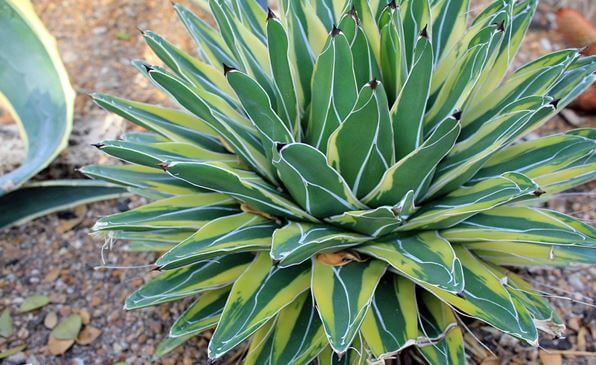Last Updated on September 9, 2023 by a Friendly Gardener
The variegated century plant is a commonly cultivated house and border plant, but that takes away nothing from how visually stunning it is.
This succulent, from the agave species, features graceful, arching leaves that can grow up to six feet in height and ten feet in width (the whole plant can reach twenty feet outdoors!), making it a superb addition to any diverse garden.
However, like any succulent, the variegated century plant needs its fair share of care and attention to bloom and flourish. If you’re adding a century plant to your collection, here’s everything you need to know about variegated century plant care.
About the Variegated Century Plant
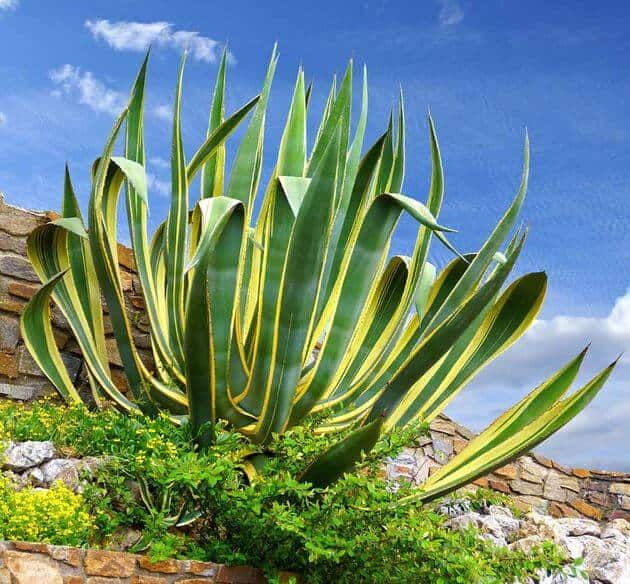
Variegated century plants were named so because it was once believed that these plants took a century to bloom! Though you don’t have to wait that long, you’ll still have to wait at least a couple of decades for these slow-growing succulents to bloom and sprout a single stalk.
When it does bloom, this plant features small yellow flowers, but being monocarpic, you’ll know that the flowers bloom just before the plant’s life ends—a rather dramatic yet beautiful goodbye!
The variegated century plant belongs to the Asparagaceae family. Scientifically, it is known as the Agave americana or Agave americana ‘Marginata’, and colloquially, as the American aloe (though this is a misnomer), maguey, century plant, and the agave variegated century plant.
This plant is native to the hot deserts of North America and Mexico and is, therefore, categorized as a desert accent plant/shrub/succulent.
When it comes to the leaves, century plants feature stiff, striped, sword-shaped leaves that grow in rosettes and end in sharp spines—a self-protection measure that often needs to be removed when the plant is grown in gardens.
As mentioned earlier, the leaves can grow six feet high and ten feet wide. A distinctive feature is green-gray variegation that the leaves sport.
Century plants are considered mildly toxic to humans and animals; the sap can be toxic when ingested. Additionally, these plants are best grown outdoors.
Variegated Century Plant Care
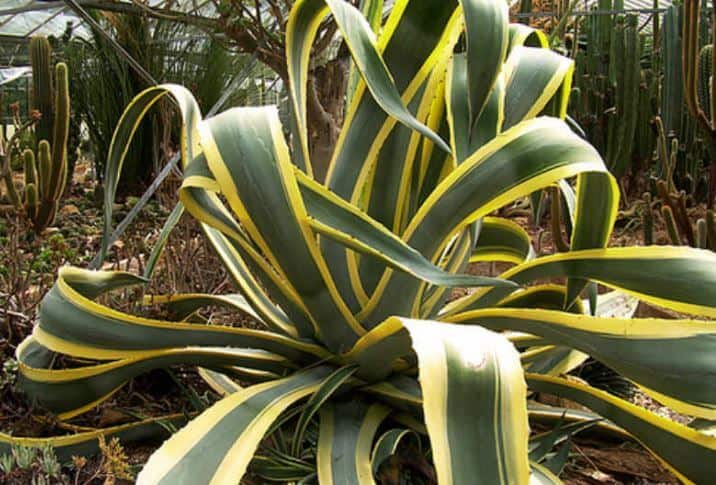
Variegated century plant care can be a little challenging to inexperienced gardeners and beginners, but following the below instructions will help all enthusiasts give the plant what it needs.
Humidity and Temperature Requirements
The plants thrive in the arid conditions of Texas and Mexico and will require similar temperature and humidity levels to flourish in your garden or indoors. Though the plant can survive the occasional dip to 20℉ (though frost damage is a huge risk), it needs temperatures between 50℉ and 70℉ to thrive.
As for humidity, the plants don’t require much, thriving in dry air similar to their native countries. The average indoor humidity works just fine for indoor century plants.
During the winters, when the temperature drops, bring your plant indoors if you live in USDA zones apart from 9, 10, and 11, or shield it from natural elements by using rocks or covering it with a cotton sheet.
Light Requirements
Used to direct sunlight for most of the day in their native environments, century plants need full sunlight for at least six to eight hours each day, but they can also survive in partially shaded areas so long as the temperature lies in between the aforementioned range.
If you’re placing your plant indoors, ensure that it gets sufficient sunlight and fresh air; placing it near an open window is a good idea.
Remember, if you’re ever moving your plant from full sunlight to partial sunlight, make the transition over a couple of weeks, adjusting water requirements accordingly to prevent shock from setting in.
Soil Requirements
The soil needs to be loose, well-draining, and sandy soil. You can plant your century plant in clay soil, provided it drains well. These plants are highly susceptible to root rot, which is a high possibility in excessively moist soil.
As with most succulents, you can use cactus potting mix for your century plant or make your own well-draining mix with peat, gravel/sand/perlite, and potting soil.
Water Requirements
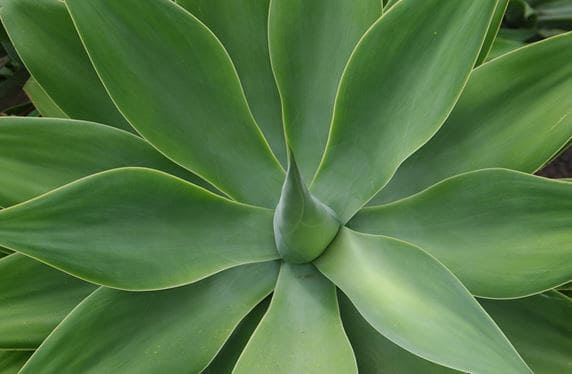
Century plants store water in their long, fleshy leaves like most succulents and desert plants, and therefore, require very little water to survive. This also makes them quite drought-resistant.
However, watering regularly in the growing season (spring and summer) will help the plants grow in a home environment. Water until you see excess water draining from the pot (or the soil is wet) and allow it to dry completely before the next watering session.
Depending on where you live, it could take anywhere between a week to a month for the soil to dry out. If you’re unsure about whether the soil has dried, use your finger to see if at least six inches of the soil is dry.
During the winter months, your century plant will require even lesser water than usual, so stick to watering the plant once a month or so.
Fertilizer Requirements
Fertilizing is not compulsory for your century plant. In fact, it may be counterproductive here since fertilizers will help the plant bloom faster, which only serves to shorten its lifespan.
Instead, provide your plant with plenty of sunshine and fresh air. In case this isn’t possible, diluted liquid fertilizers used during the growing season will help supplement the nutrition your plant is receiving. Use the fertilizer sparingly and once every two weeks.
Potting and Repotting
When placing your century plant in a pot, make sure that you’re doing so without damaging the roots. Additionally, make sure the pot has enough drainage holes to prevent waterlogging.
Repotting should take place in spring, but only do so when you see that the plant needs it (for example, when the roots grow out through the drainage holes).
Propagating
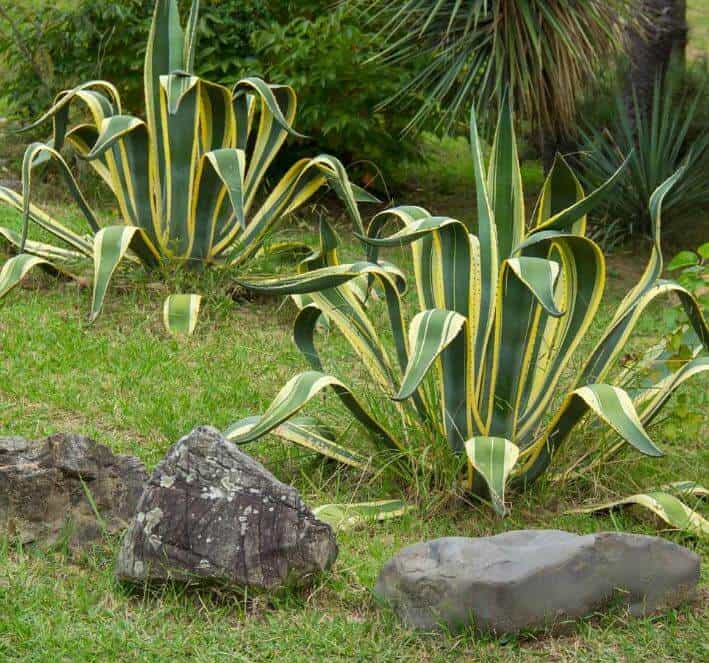
Stem cuttings are the most effective way to propagate century plants. Cut a healthy stalk with at least three leaves from a mature plant and place this in a pot with moist, fresh soil. Let the soil dry out before you water it again.
Within two weeks, you should see roots forming, which indicates that it’s time for a larger container.
Seed propagation is especially hard with these plants as flowers take a long time to appear, and even if you do get a seed, the germination success rate is low.
Pests and Problems
Century plants find their arch nemesis in agave snout weevils, common when the plant is placed in excessively moist soil or humidity. Signs such as discolored, drooping, or wilted leaves and a foul smell are indications that there could be a case of agave snout weevils.
The Bottom Line
Variegated century plants require more care than most other plants, but looking after them and watching them flourish can be quite rewarding (and quite a lesson in patience!).
If you have the time and patience to spare, there’s nothing like adding these gorgeous plants to your home or garden.

